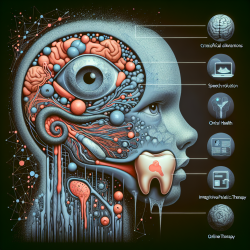Thermoelectric materials are taking the world by storm, and their latest advancements in two-dimensional (2D) nanomaterials are set to make waves in the field of online therapy. From improving the efficiency of devices to providing new research avenues, the implications are vast. Here’s how practitioners can leverage the outcomes of the latest research on 2D thermoelectric materials to enhance their online therapy services.
Understanding 2D Thermoelectric Materials
2D thermoelectric materials, such as graphene, black phosphorus, and transition metal dichalcogenides, have unique properties that make them excellent candidates for converting heat into electrical power. Their high electrical conductivity, low thermal conductivity, and excellent mechanical properties make them suitable for various applications, including power generation and cooling devices.
Implications for Online Therapy Devices
Online therapy platforms like TinyEYE rely heavily on efficient and reliable devices to deliver high-quality services. Here’s how the advancements in 2D thermoelectric materials can benefit these platforms:
- Enhanced Device Efficiency: The high thermoelectric performance of 2D materials can lead to more efficient cooling systems in devices, ensuring they operate smoothly during extended therapy sessions.
- Improved Battery Life: Devices utilizing 2D thermoelectric materials can potentially convert waste heat into electrical energy, extending battery life and reducing the need for frequent charging.
- Lightweight and Flexible Devices: The mechanical properties of 2D materials allow for the development of lightweight and flexible devices, making them more comfortable and easier to use for both therapists and clients.
Encouraging Further Research
While the current advancements are promising, there is still much to explore. Practitioners are encouraged to delve deeper into the following areas:
- Material Optimization: Further research into optimizing the properties of 2D thermoelectric materials can lead to even more efficient devices.
- Integration with Existing Technologies: Exploring how these materials can be integrated with current online therapy platforms and devices can pave the way for innovative solutions.
- Cross-disciplinary Collaboration: Collaboration between material scientists, engineers, and therapy professionals can accelerate the development and implementation of these technologies.
By staying informed about the latest research and actively participating in further studies, practitioners can significantly enhance their skills and the quality of services they provide.
To read the original research paper, please follow this link: Recent Progress of Two-Dimensional Thermoelectric Materials.










